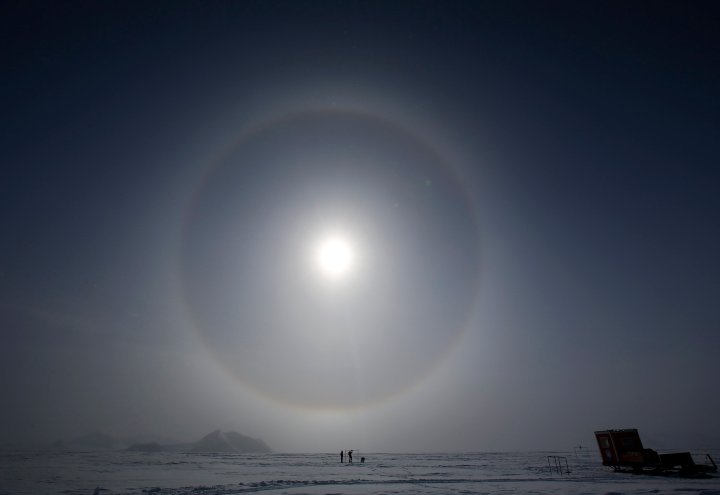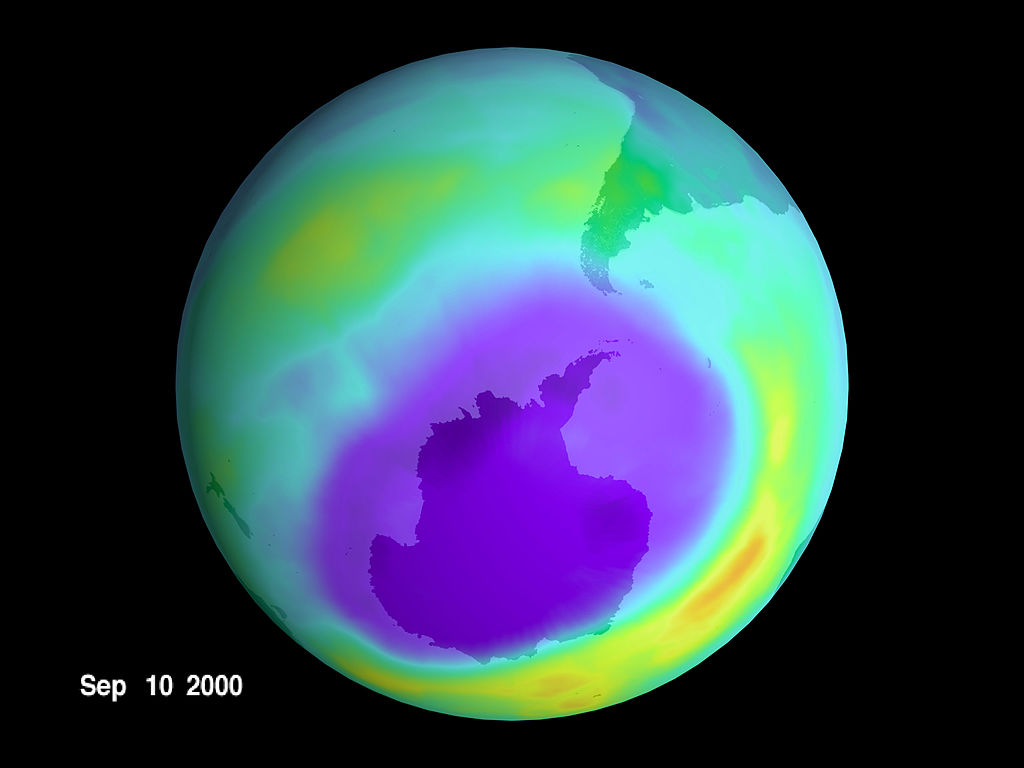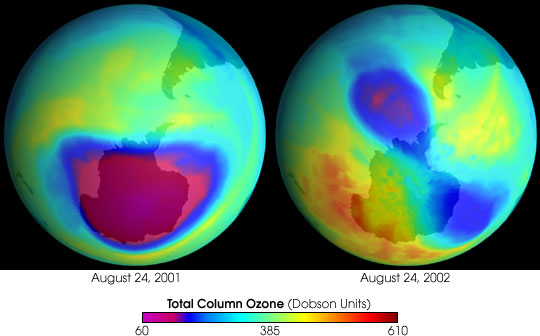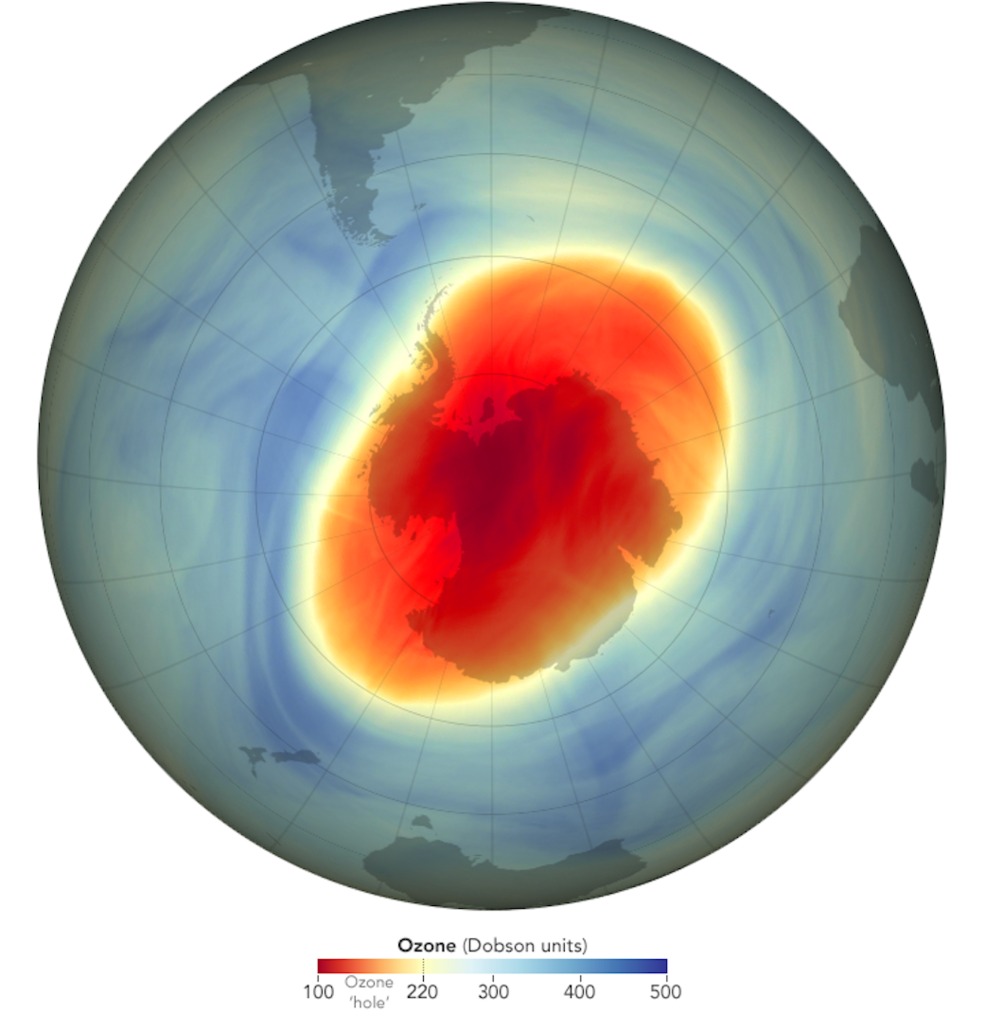Climate
Whatever happened to the hole in the ozone layer?

In the 1990s, the hole in the ozone layer dominated world headlines. Now, three decades later, it is seldom mentioned. What happened to the hole? And does the subject hold any lessons for climate awareness today?
In 1985, the British Antarctic Survey announced troubling news: the ozone layer was thinning to unprecedented levels. What became known as the “ozone hole” led to a global climate movement to slow the damage being caused.
Ozone is found in the earth’s stratosphere, forming a layer around the planet between 15 and 50kms above the ground. The ozone layer absorbs and scatters ultraviolet radiation from the sun, acting as the earth’s own “sunscreen”, protecting life from dangerous UV rays that could “sterilise” the surface of the planet.
With a weakened ozone layer, UV rays would intensify, leading to faster and more damaging sunburns, skin cancer and even reduced crop yields.
When the scientists from the British Antarctic Survey released the findings of their research, there was, understandably, a groundswell of concern. Experts began racing against the clock to understand what was causing this rapid thinning of the ozone layer.
In 1974, scientists Mario Molina and F. Sherry Rowland published research proposing that chlorofluorocarbons (CFCs) – chemicals containing atoms of carbon, chlorine, and fluorine used in the manufacture of aerosol sprays and as refrigerants and solvents – could destroy the ozone layer, and that if our use of CFCs continued unabated, the ozone layer would continue to deteriorate.
However, it was only over a decade later, when the hole expanded, that people began to grasp the seriousness of the situation.
By 1985, there was a general consensus on the source of the problem: sunlight catalyses reactions with human-made forms of chlorine and CFCs, which destroy ozone molecules in the stratosphere.
The solution seemed obvious: stop the use of chlorofluorocarbons.
But, like all environmental crises, it needed global action, cooperation and the implementation of strict legislation to solve the problem.
In 1987, the landmark Montreal Protocol on Substances that Deplete the Ozone Layer was reached – a treaty designed to curb the production and consumption of nearly 100 man-made “ozone-depleting substances” (ODS), including CFCs and hydrochlorofluorocarbons (HCFCs).
Under the protocol, nations were obligated to phase out ODS, control ODS trade and provide annual reports. Countries were also encouraged to begin finding alternatives with less harmful environmental impacts and new ways of safely disposing ODS appliances.

Back in 2000, scientists at NASA said they had located the largest ozone hole ever recorded. In a report released October 3, 2000, the Goddard Space Flight Center in Greenbelt, MD said satellites have observed an 11.5 million square-mile hole, a severe thinning of Earth’s protective ozone layer over Antarctica. Image: Newsmakers

The Antarctic Ozone Hole in 2001 compared to 2002. Image: Greg Shirah / NASA GSFC Scientific Visualization Studio, based on data from EPTOMS.
In 2007, the Montreal Protocol encouraged nations to accelerate their schedules to phase out HCFCs, after recognising that not only are they ozone-depleting substances, but are also powerful greenhouse gases that play a role in climate change as a whole.
The Montreal Protocol is considered to be one of the most successful environmental agreements of all time, and is to date the only UN treaty that has been ratified by all 198 member states.
“What the parties to the Protocol have managed to accomplish since 1987 is unprecedented, and it continues to provide an inspiring example of what international cooperation at its best can achieve,” the UN reports.
In 2014, NASA confirmed that the amount of ozone-depleting substances in the atmosphere had dropped since 2010, and stratospheric ozone depletion had levelled off and was showing some signs of recovery. And in 2017, observations found that the ozone hole was at its smallest since 1988.
On 26 October 2022, NASA announced that the hole in the ozone layer continues to shrink every year.
“Over time, steady progress is being made, and the hole is getting smaller,” confirmed NASA chief scientist, Paul Newman.
“We see some wavering as weather changes, and other factors make the numbers wiggle slightly from day to day and week to week. But overall, we see it decreasing through the past two decades. The elimination of ozone-depleting substances through the Montreal Protocol is shrinking the hole.”
With continued efforts, the UN predicts the ozone layer will recover by 2050.
“Without this treaty, ozone depletion would have increased tenfold… and resulted in millions of additional cases of melanoma, other cancers and eye cataracts. It has been estimated, for example, that the Montreal Protocol is saving an estimated two million people each year by 2030 from skin cancer,” according to the UN.

This map shows the size and shape of the ozone hole over the South Pole on Oct. 5, 2022, when it reached its single-day maximum extent for the year. “The annual Antarctic ozone hole reached an average area of 23.2 million square kilometers between September and October 2022. This depleted area of the ozone layer over the South Pole was slightly smaller than last year and generally continued the overall shrinking trend of recent years,” according to NASA. Image: Credits: NASA Earth Observatory / Joshua Stevens.
The healing of the ozone layer continues to be a lesson for humanity in the midst of the climate crisis of today. In 2009, researchers simulated what the world would look like without the Montreal Protocol – and the results were startling.
By 2020, 17% of global ozone would be destroyed, and by 2040, the ozone “hole” would be global.
By 2070, the intensity of UV radiation at the earth’s surface would double, and at shorter wavelengths, intensity would rise by as much as 10,000 times.
“Skin cancer rates would soar,” NASA predicted.
“The Montreal Protocol is a remarkable international agreement that should be studied by those involved with global warming and the attempts to reach international agreement on that topic.” NASA’s Goddard Space Flight Centre scientist and study co-author, Richard Stolarski, said at the time. DM/ML
Visit Daily Maverick’s home page for more news, analysis and investigations


















 Become an Insider
Become an Insider
Comments - Please login in order to comment.